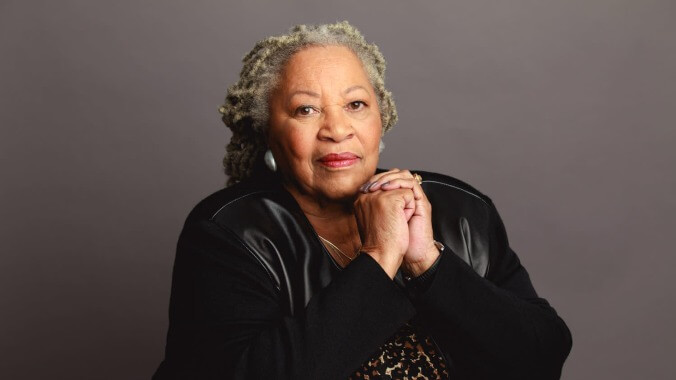A new documentary about Toni Morrison puts a great American writer into context


Calling Timothy Greenfield-Sanders’ documentary Toni Morrison: The Pieces I Am just a “biography” of the Pulitzer- and Nobel-winning novelist doesn’t properly describe what the filmmaker’s doing here. From the opening minute, the movie jumps straight into a long conversation about what Toni Morrison’s work means, with contributions from critics, academics and colleagues. By the time the film ends two hours later, Greenfield-Sanders has checked in with such luminaries as Walter Mosley, Oprah Winfrey, Angela Davis, Hilton Als, Russell Banks, and Fran Lebowitz, who all speak in hushed, awed tones about Morrison’s prose, her poise, and her inspiring career-long commitment to writing books about black people, for black people. Not until about 20 minutes into The Pieces I Am is there a moment when a voice-over—from the author herself—starts parceling out details about where the subject was born, what her family was like, or anything of that kind.
This isn’t to say that The Pieces I Am is some radically innovative work of nonfiction. If anything, the biggest knock against this picture is that Greenfield-Sanders is doggedly conventional in his approach. Roughly a third of the film consists of expert witnesses sitting against gray backdrops, waxing rhapsodic about Morrison. Another third has Morrison herself talking, framed against the same gray. The other third features archival footage and photos of the writer from the ’50s to today, with a lot of that footage drawn from still more interviews, conducted by various TV personalities across the decades. Greenfield-Sanders and his editing team weave all this together, in ways that pull viewers along but don’t exactly push them—at least not via some daring experiments with form.
Also, while the documentary takes its time before getting to the biographical material, it covers enough ground by the closing credits that even people who know nothing about Morrison going in should be able to pass a simple pop quiz after. Morrison talks about her time at Howard: first as a student, where she faced segregation outside and inside the black community; and then as a teacher, where she began developing her sense that fiction writing should be an act of empathetic imagination, not a journal of personal experiences. The Pieces I Am recalls Morrison’s years as an editor, where she worked to bring more black voices into the mainstream; and it gets into the controversy that ensued in the ’80s when dozens of her peers wrote an open letter to The New York Times complaining that the major awards-giving bodies had overlooked her for too long.
In its last 20 minutes, the movie covers the decades of accolades that ensued after the NYT kerfuffle, including a sales-boost from Oprah’s book club, a major motion picture adaptation of the novel Beloved, and the rare Nobel given to a woman of color. Yet throughout, The Pieces I Am works best not as a summary of the high points of a famous author’s career, but rather as an exercise in sustained critical analysis. Greenfield-Sanders’ expert panel explains how novels like The Bluest Eye, Sula, Song Of Solomon and the Beloved trilogy transformed the literary canon, and challenged the establishment’s perceptions of how “a black writer” should be focusing her eyes and her energy. Some of the most bracing passages in the documentary quote contemporaneous reviews of Morrison’s novels that compare her (not always favorably) to other African-American novelists, and propose that she’ll never really be one of the greats until she broadens her work to include more white characters.
Nobody’s better than explaining how absurd this criticism is than Morrison, who remains Greenfield-Sanders’ most disarming and insightful commentator from start to finish, giving a performance that helps turn the movie into more of an experience than an encyclopedia entry. In old clips and new interviews, she has such a sense of calmness and certainty, as she explains everything from the secret to good carrot cake—don’t skimp on the carrots—to why she never felt the need to explain aspects of the black experience in her work in ways that would make them easier for white audiences to understand. Frequently, Morrison punctuates her points and her recollections with a warm chuckle, expressing the same embrace of life’s fullness that informs even her bleakest stories.